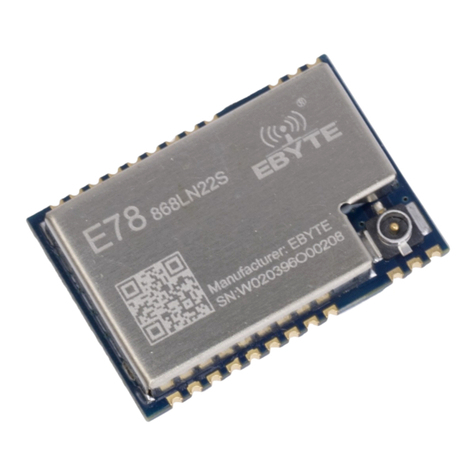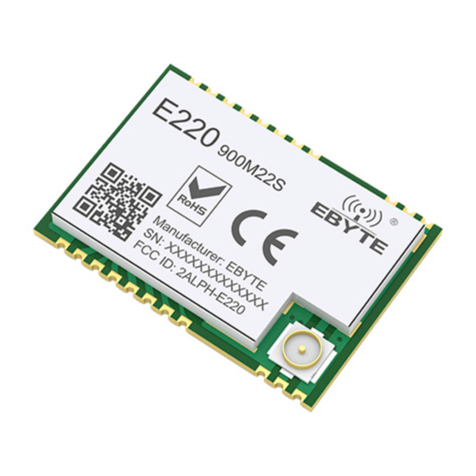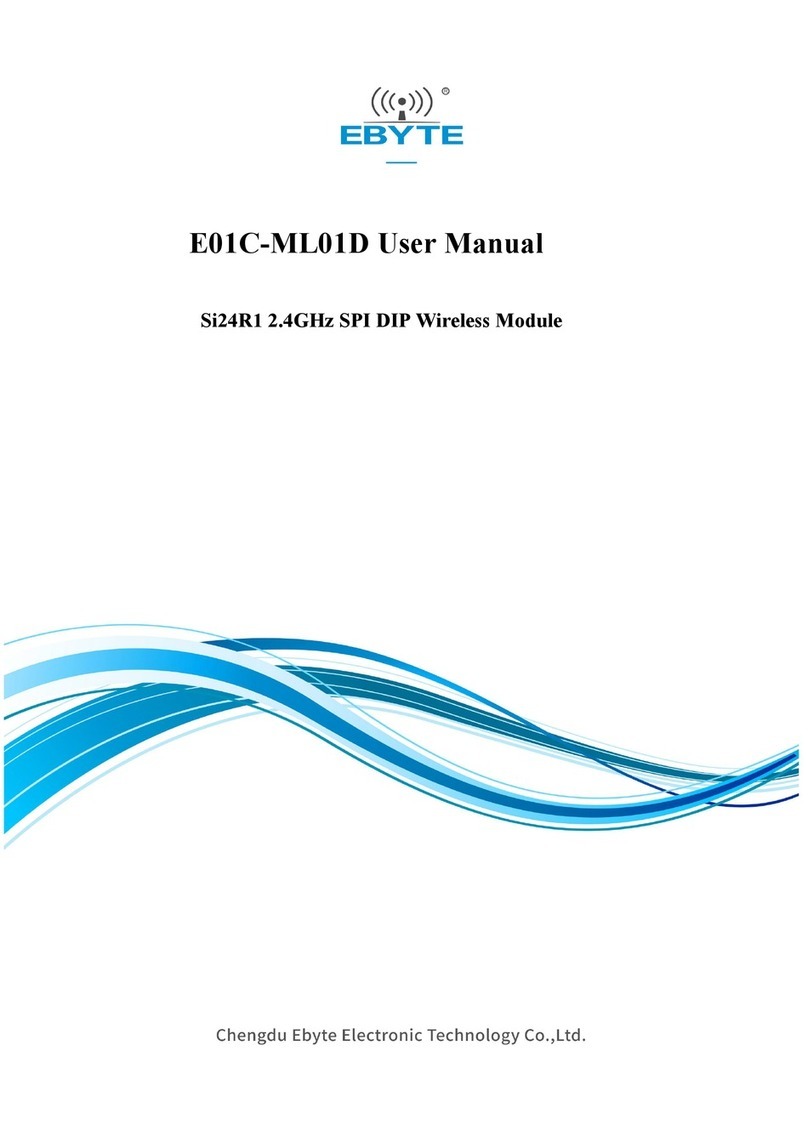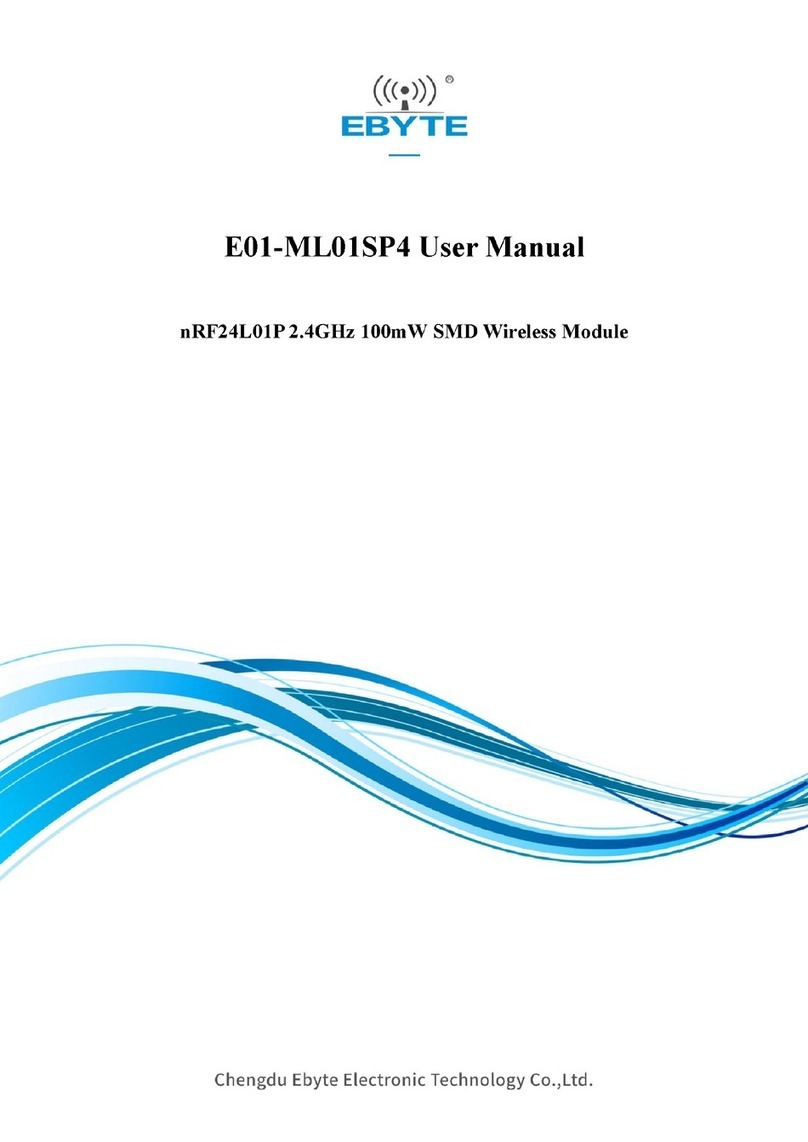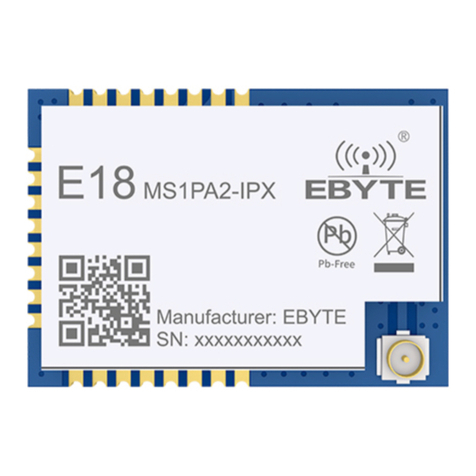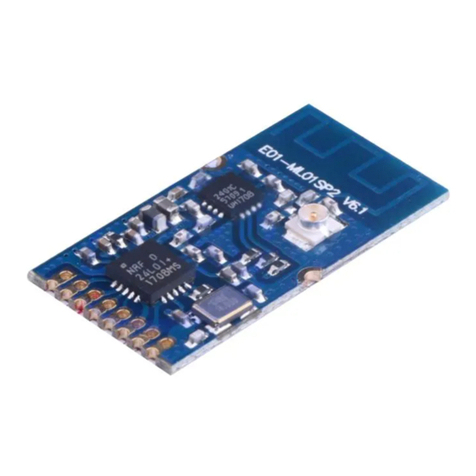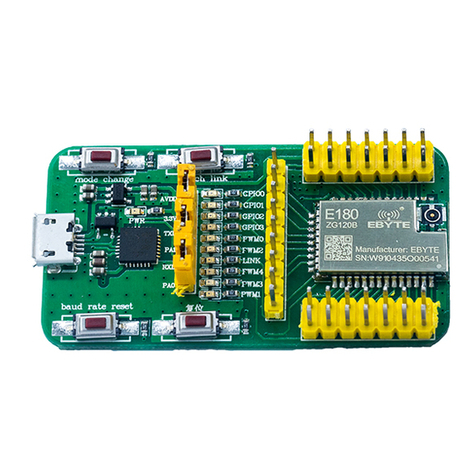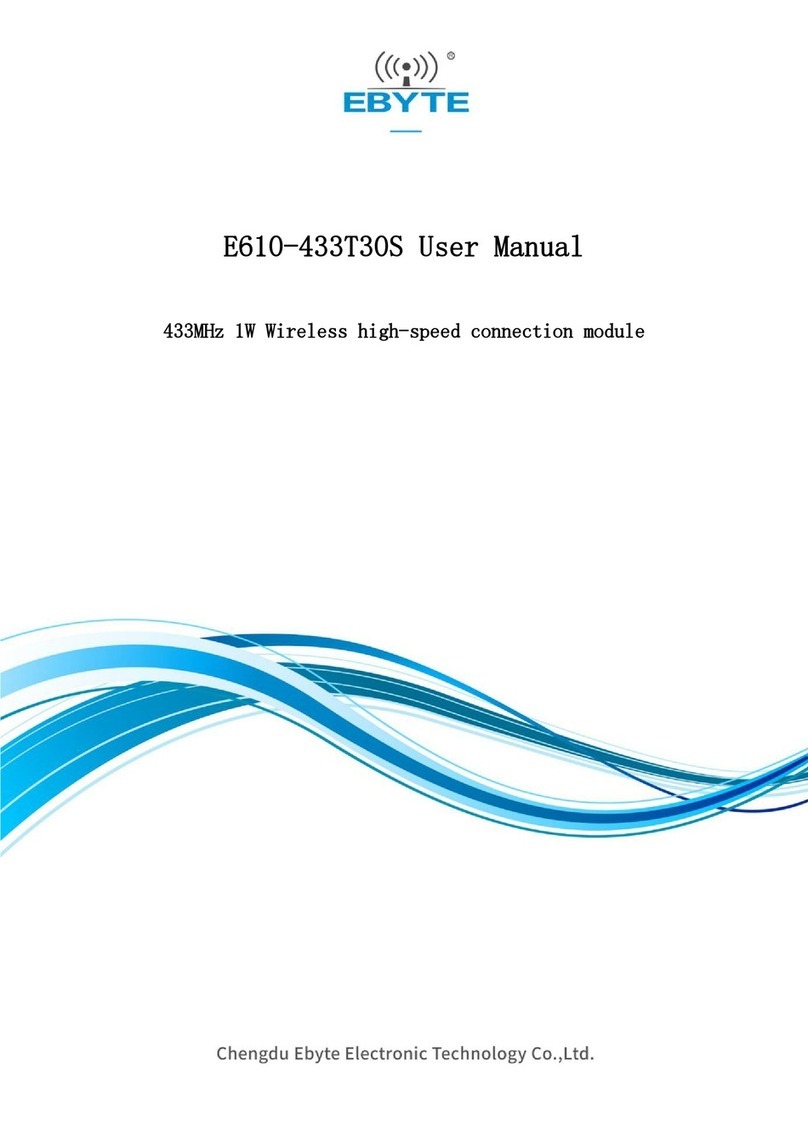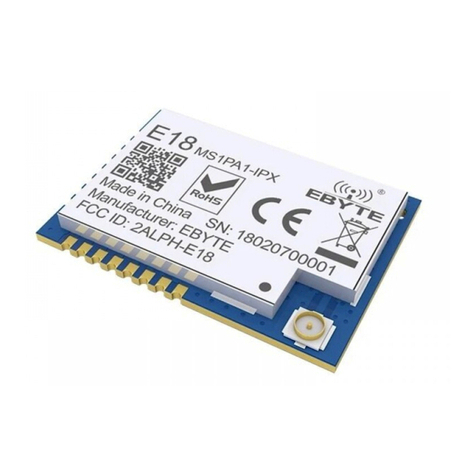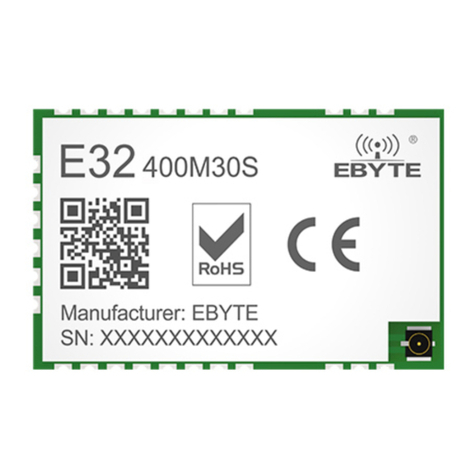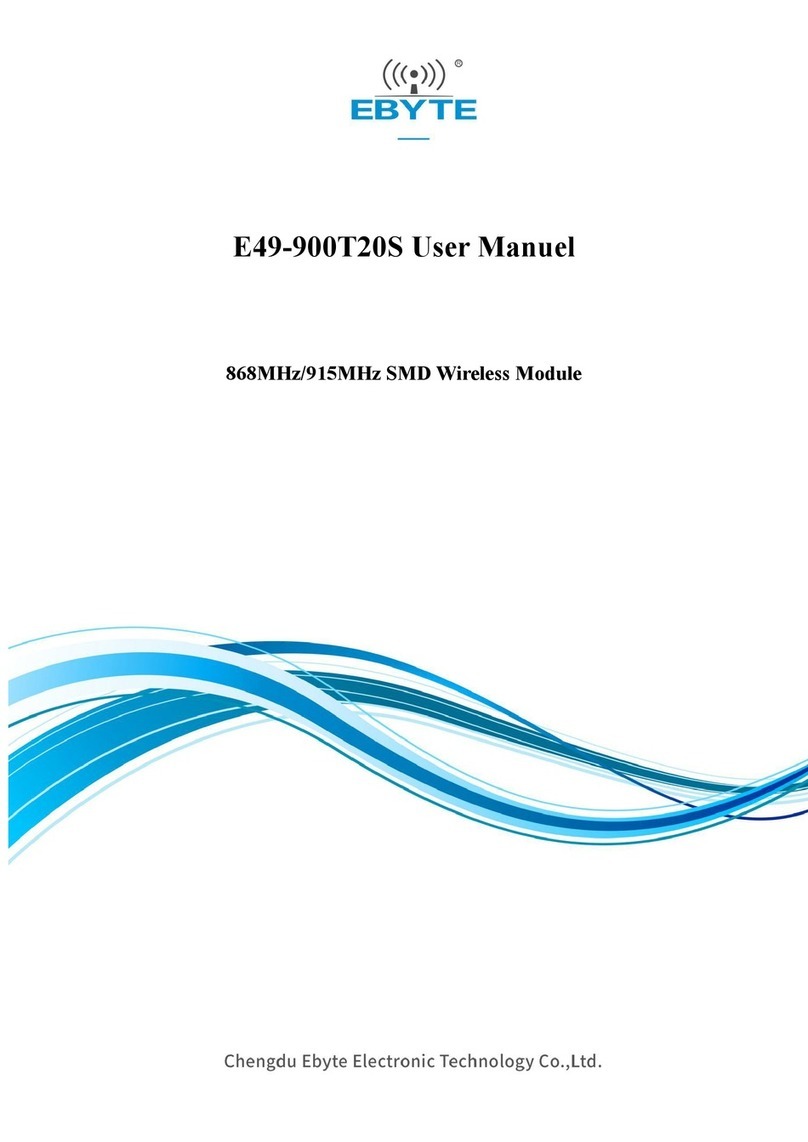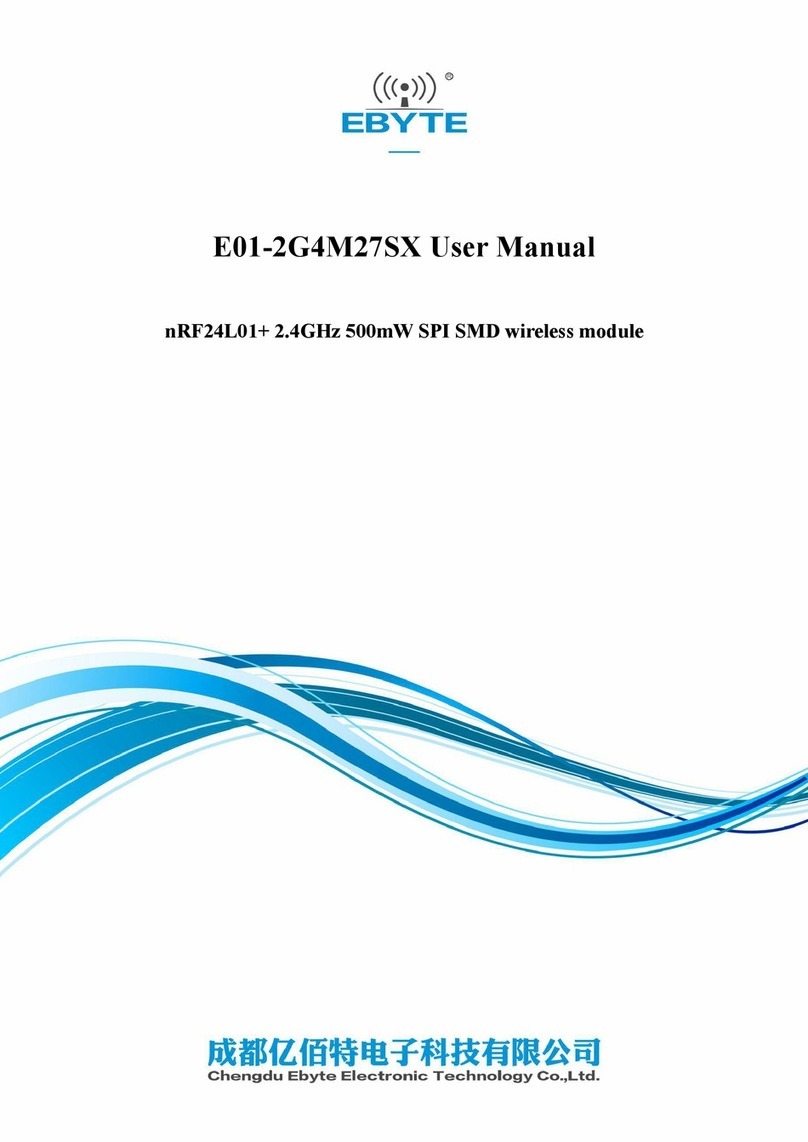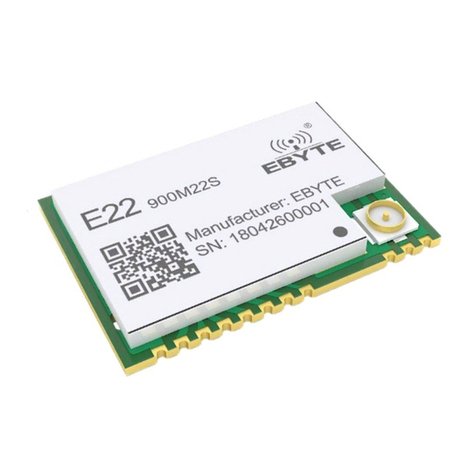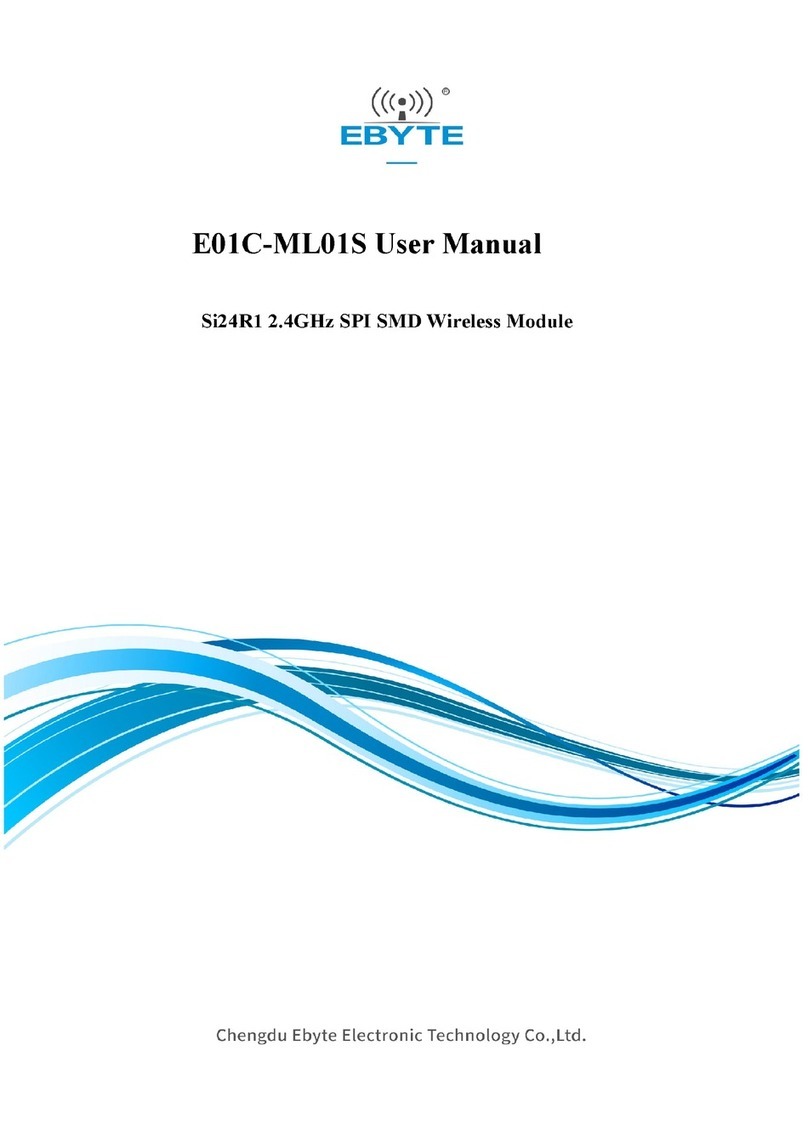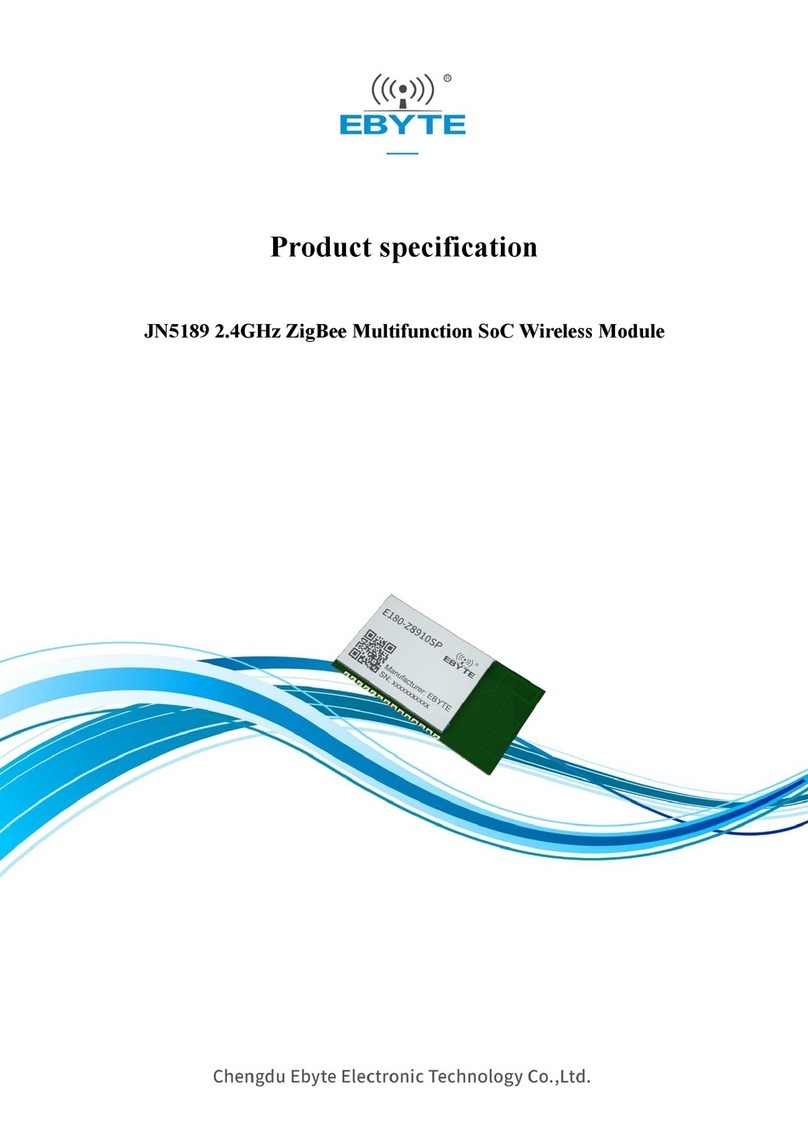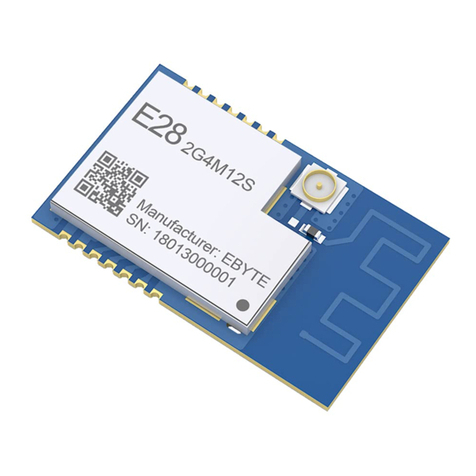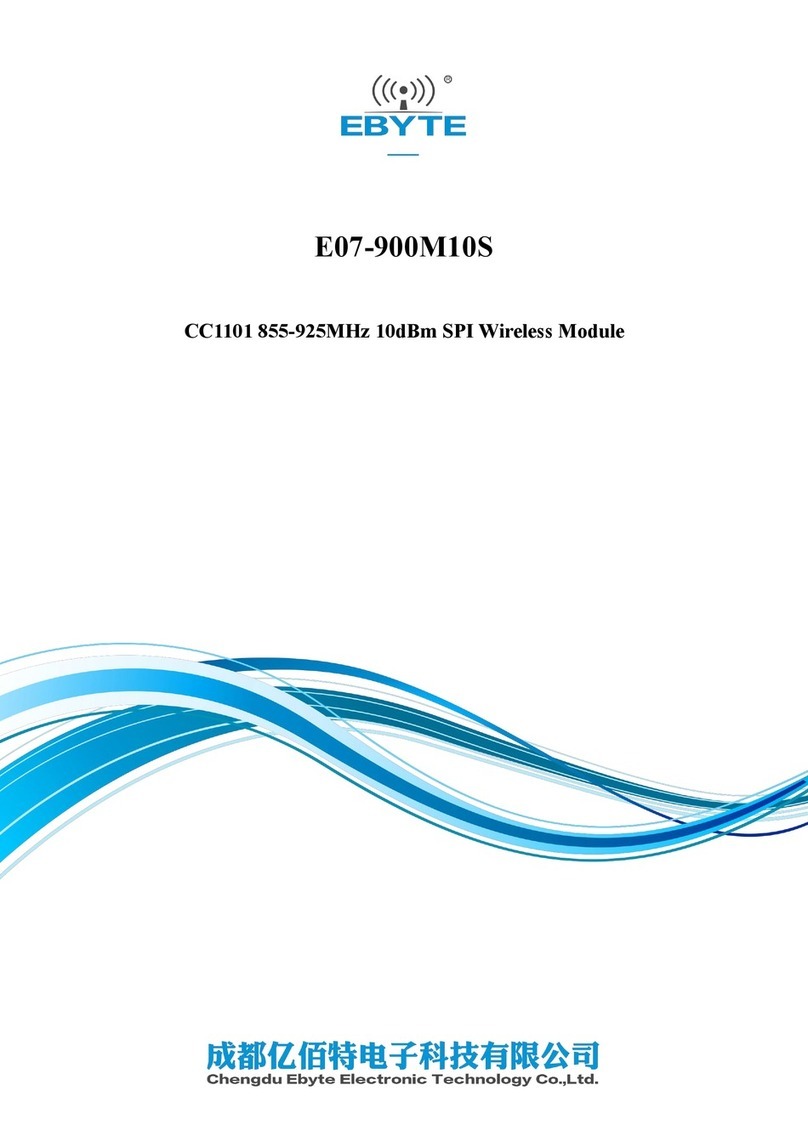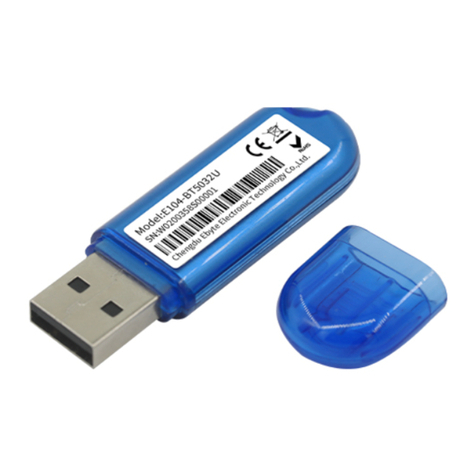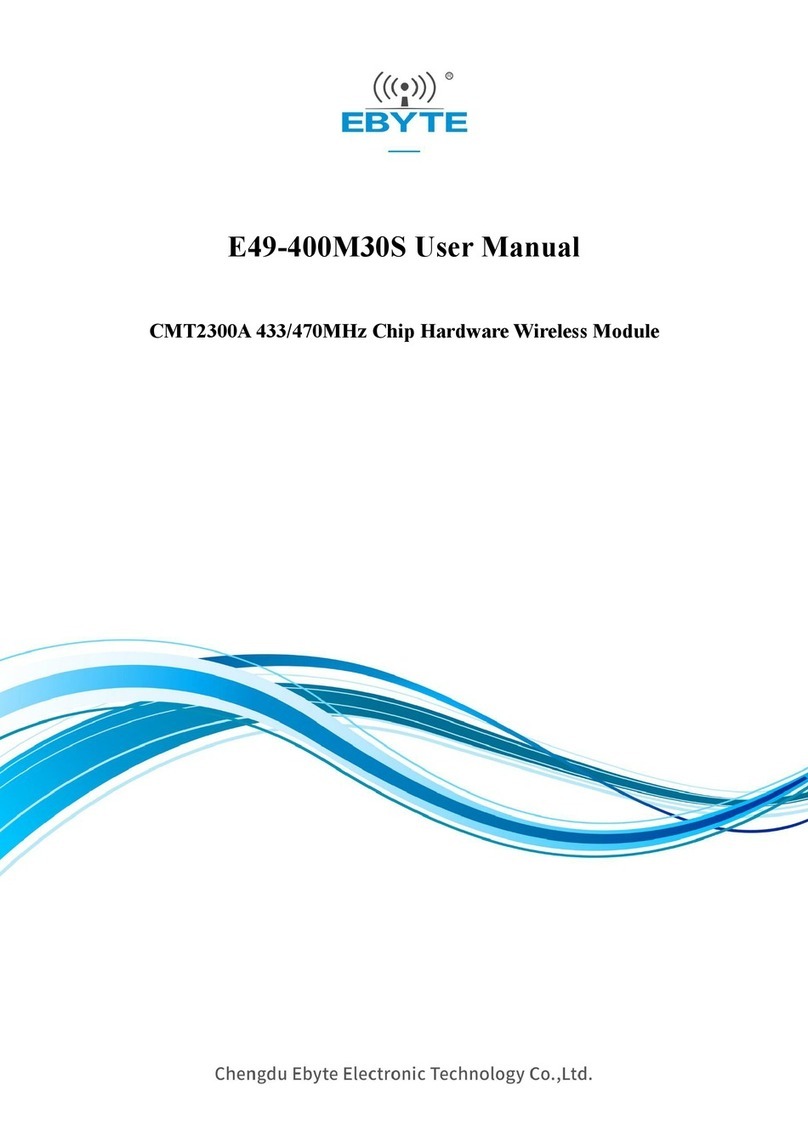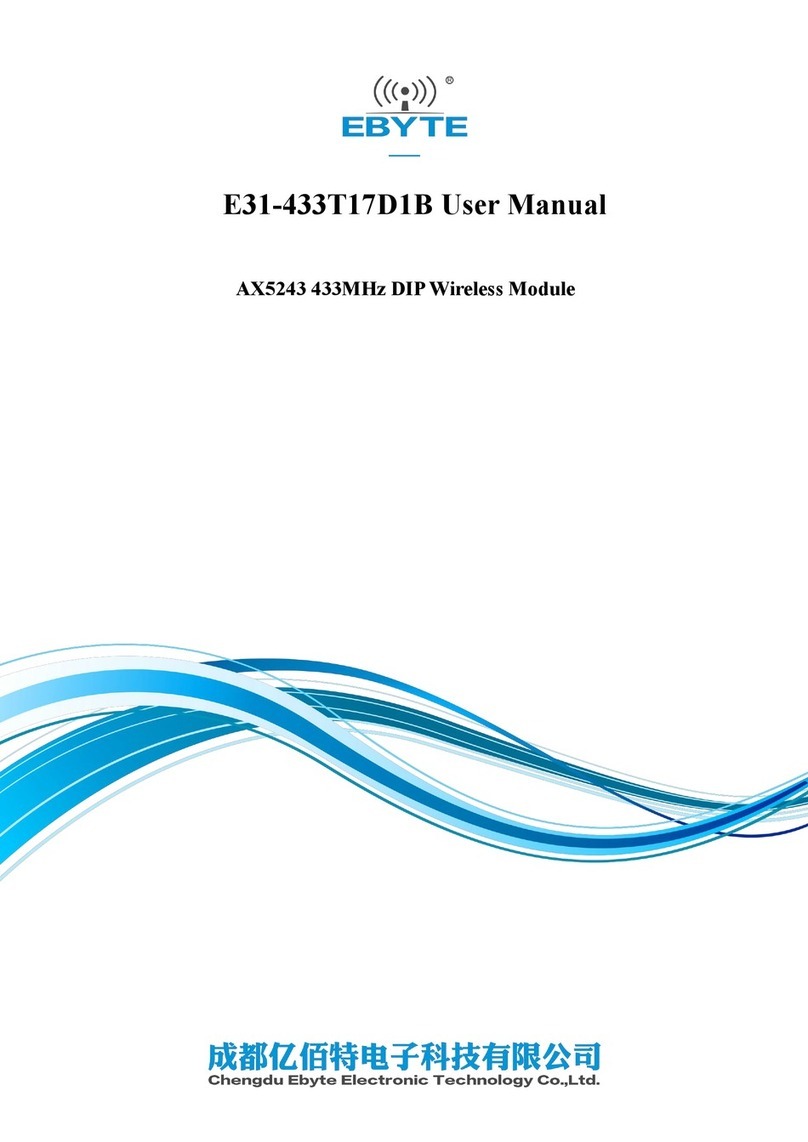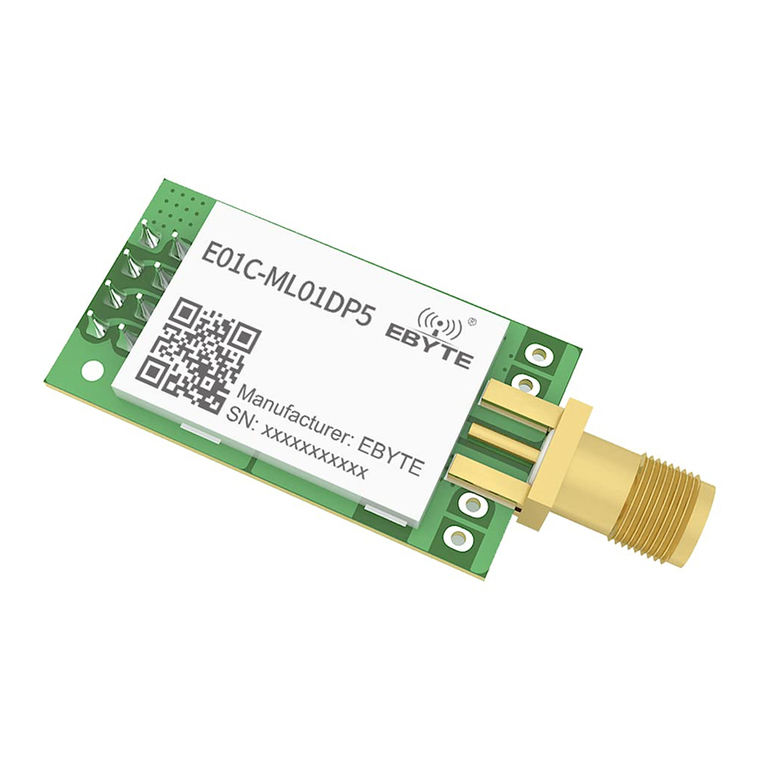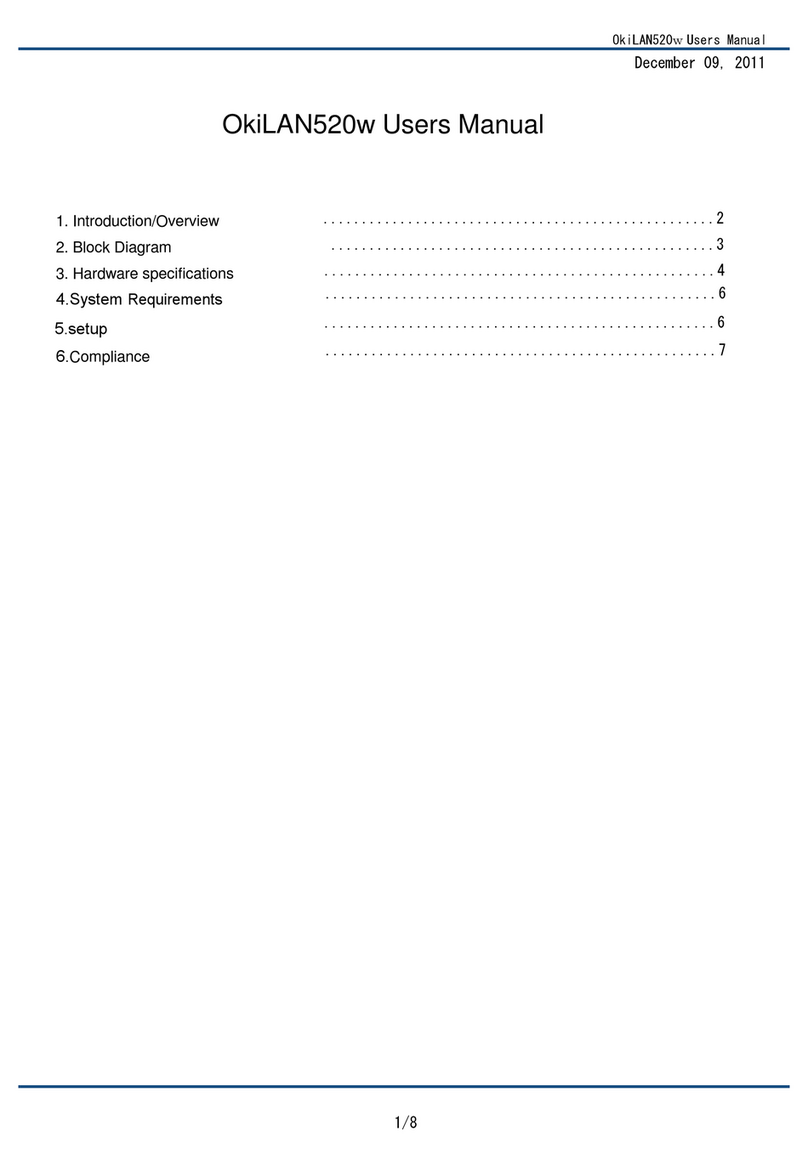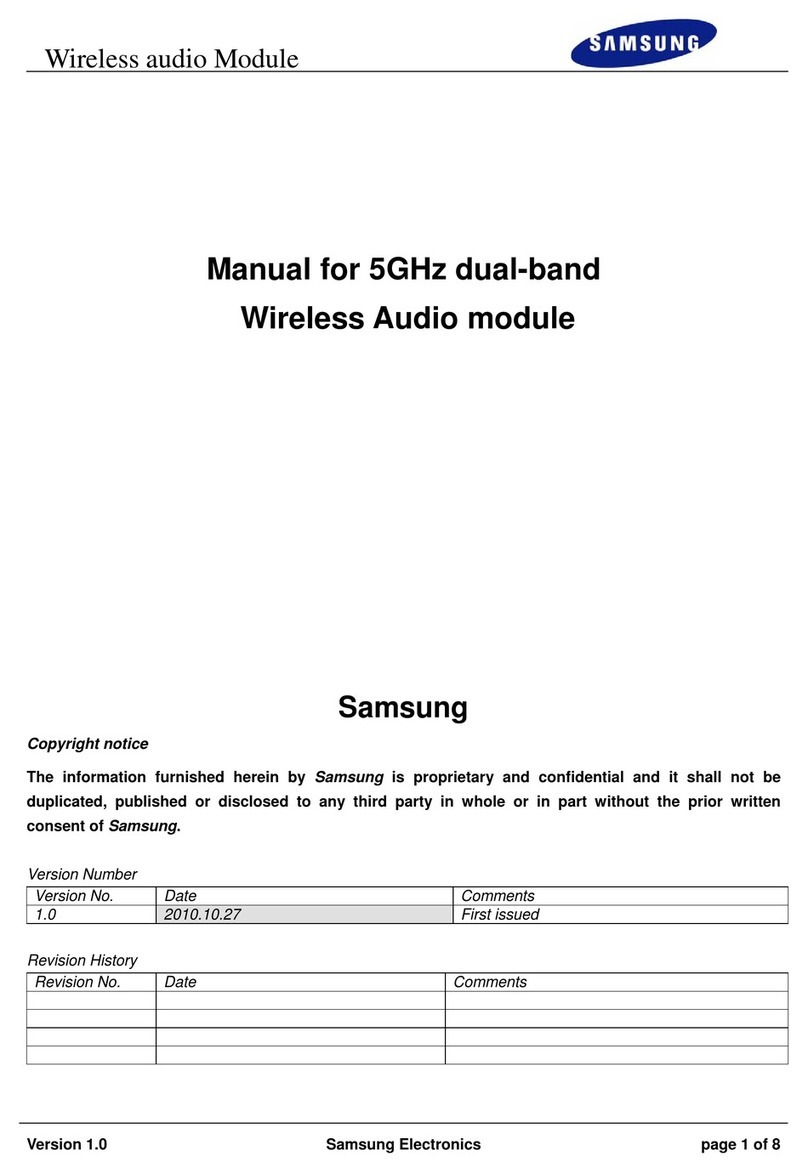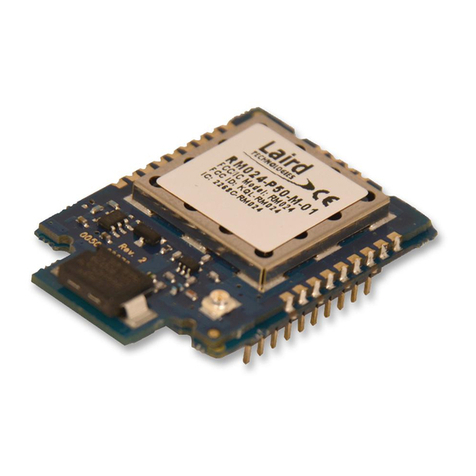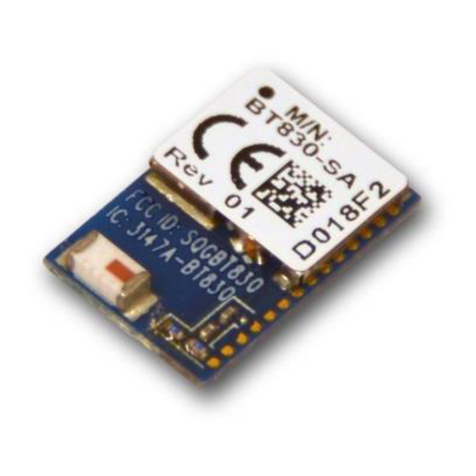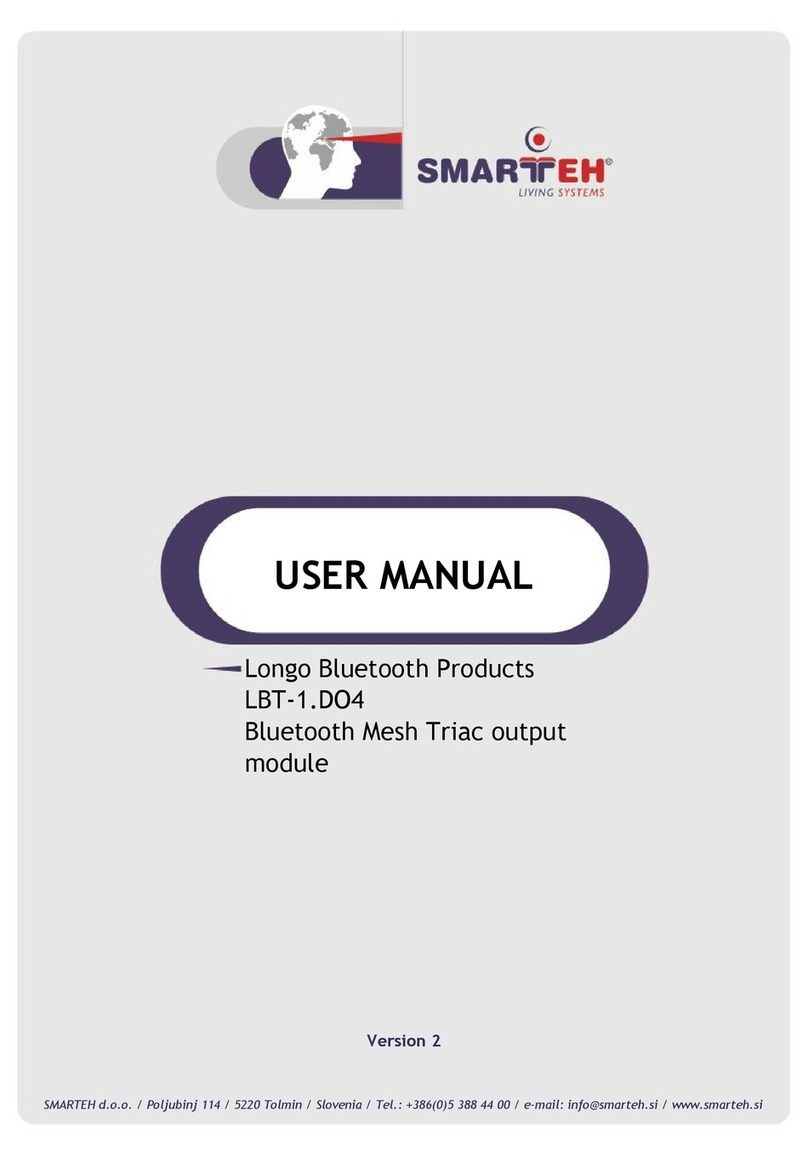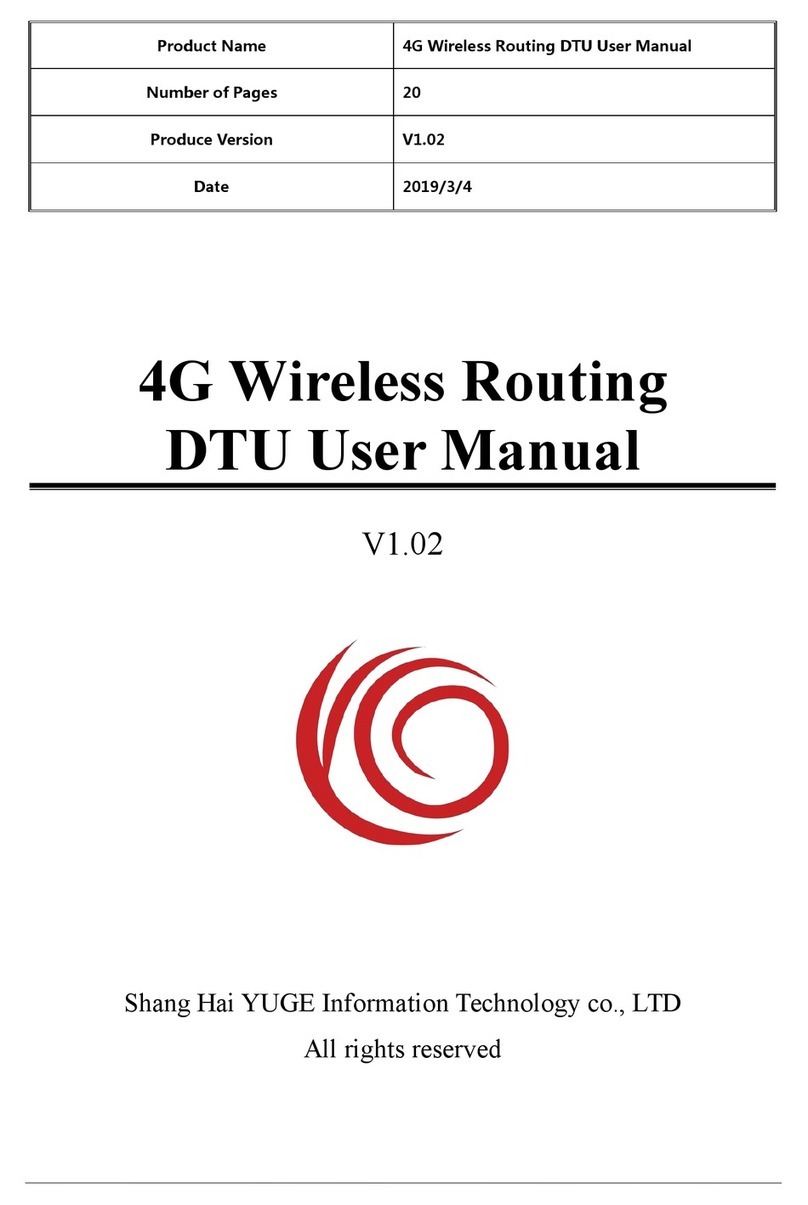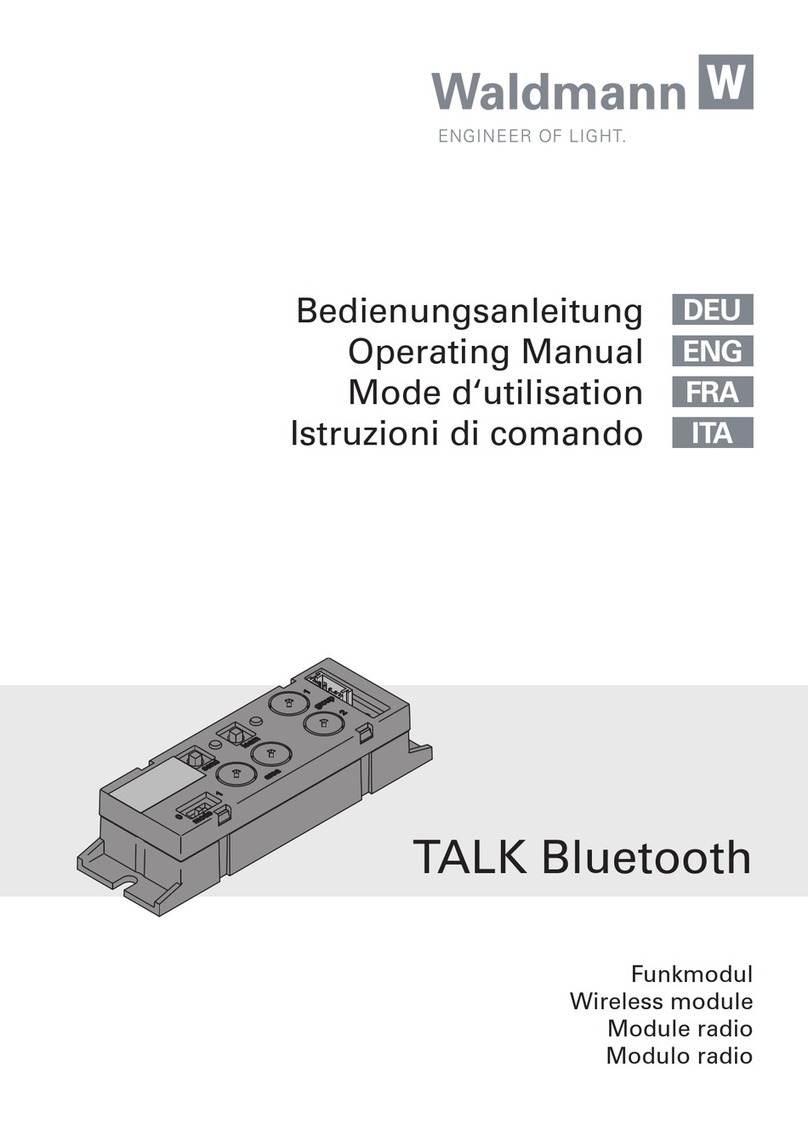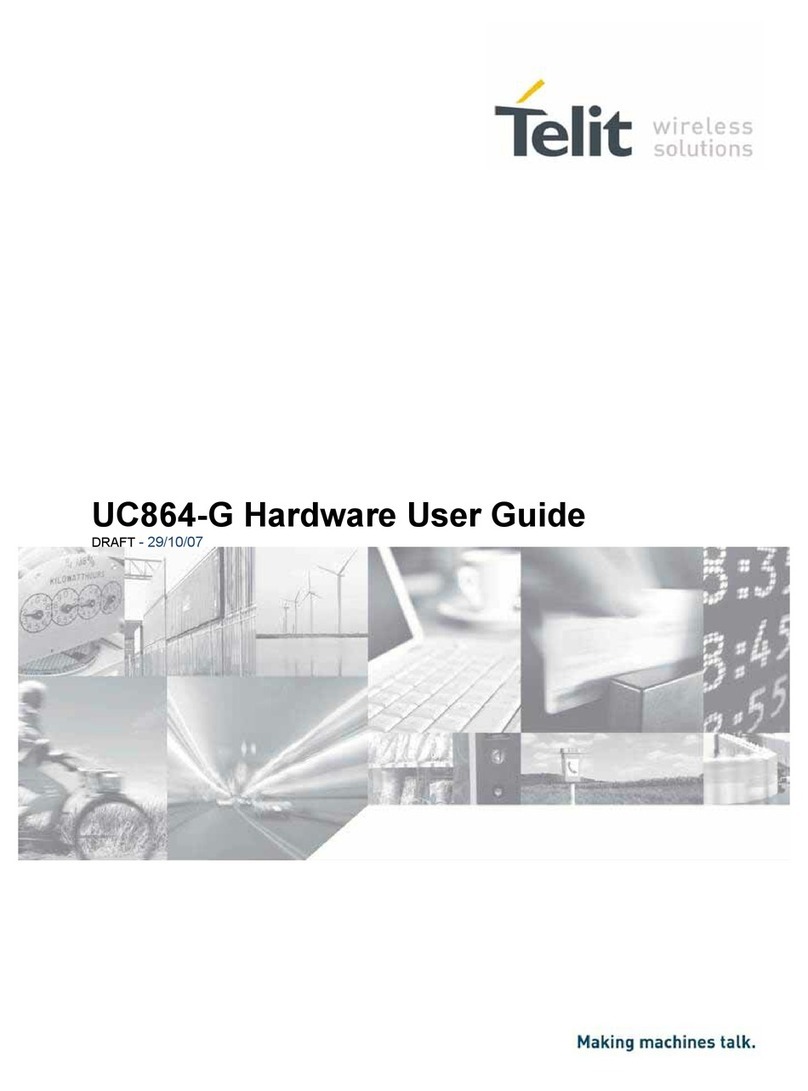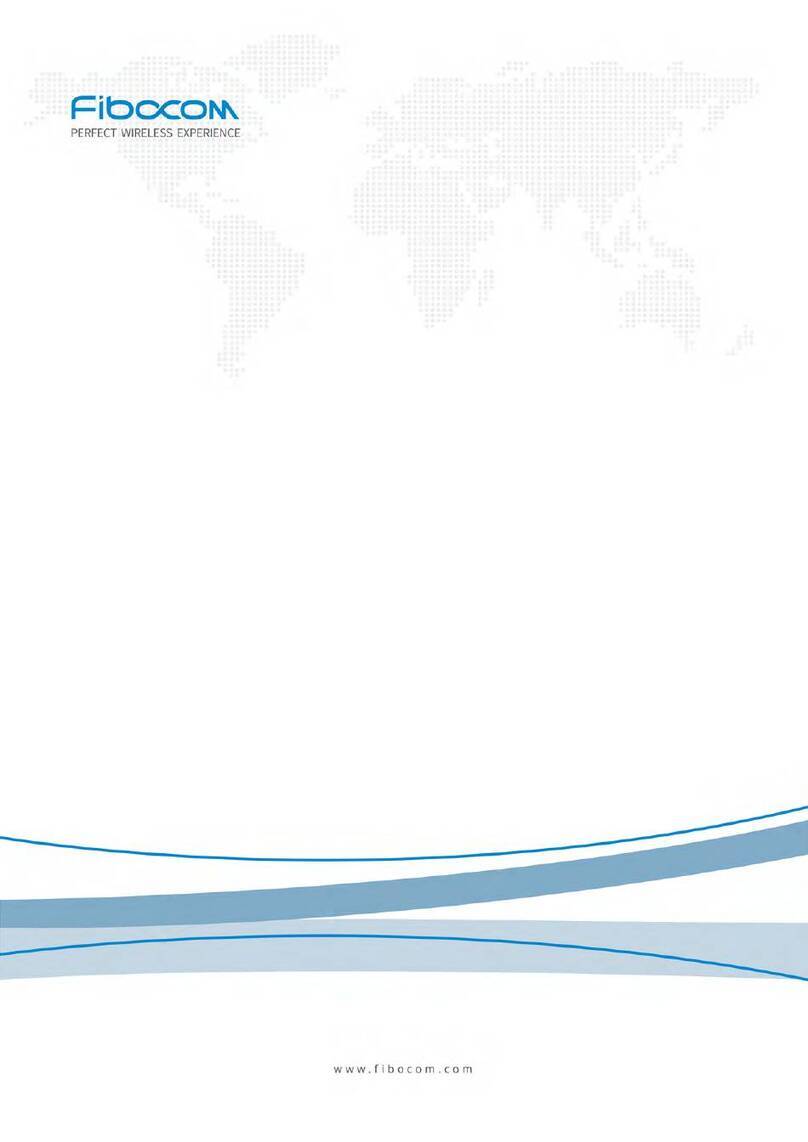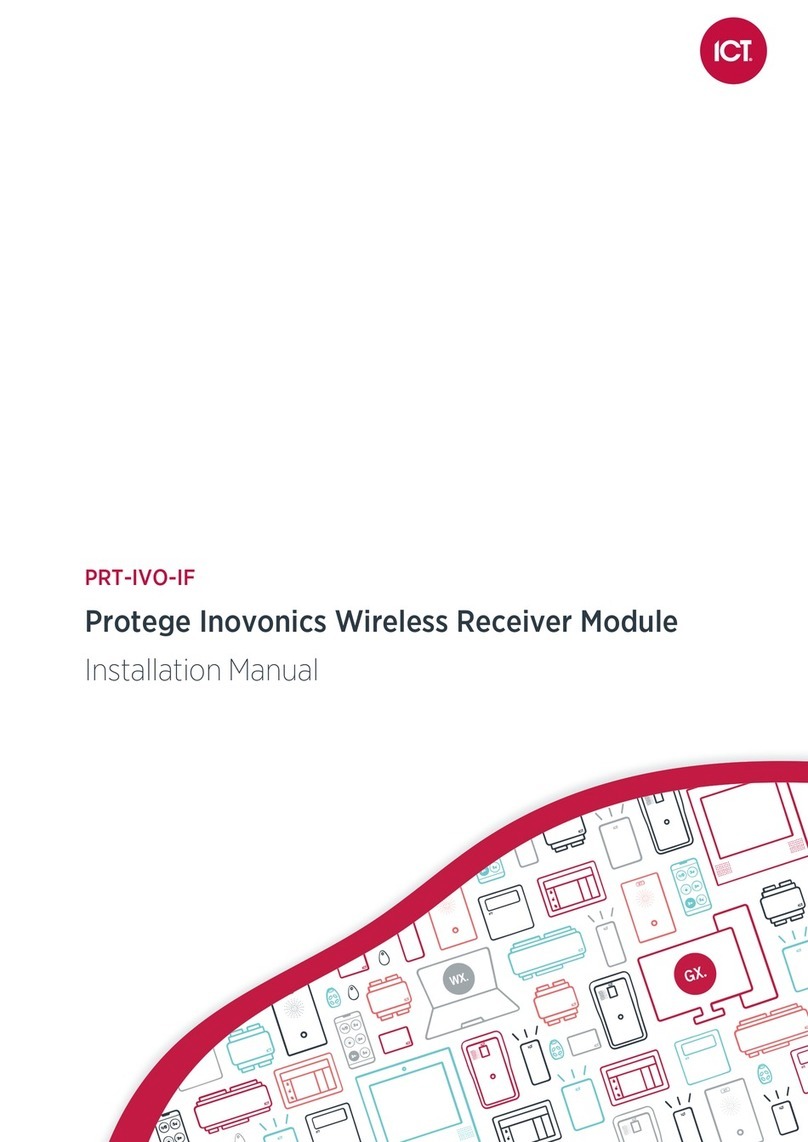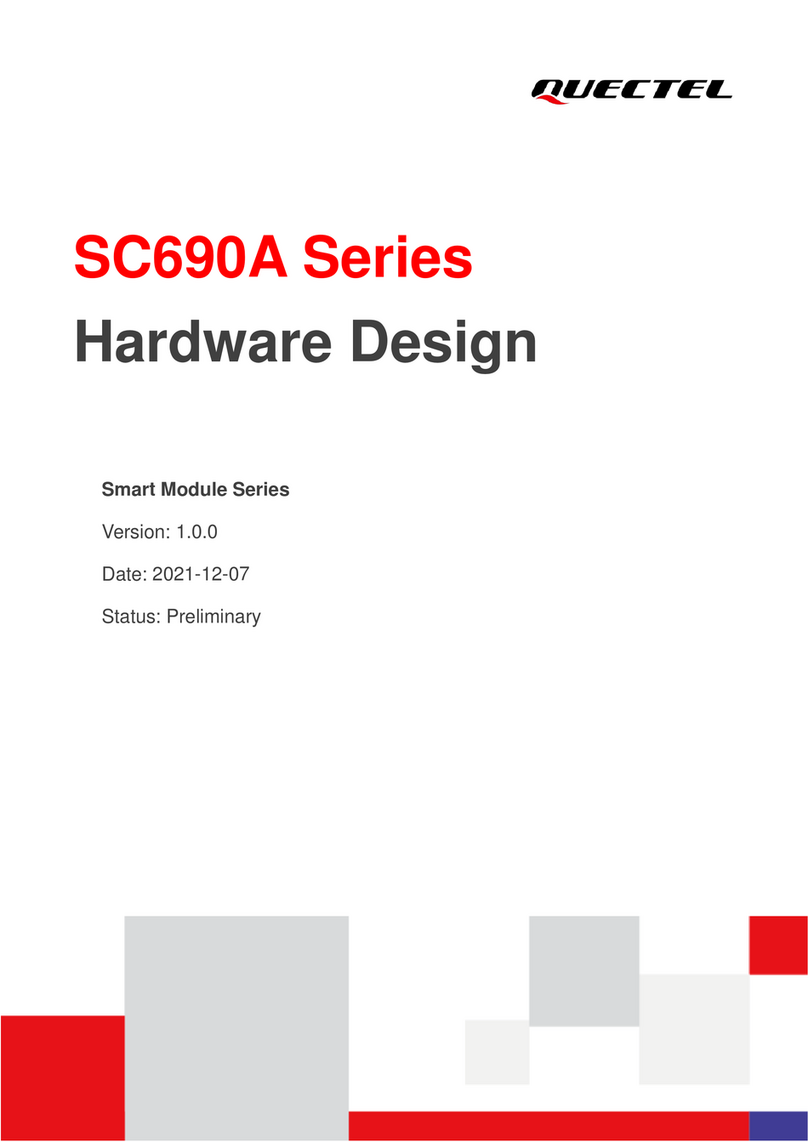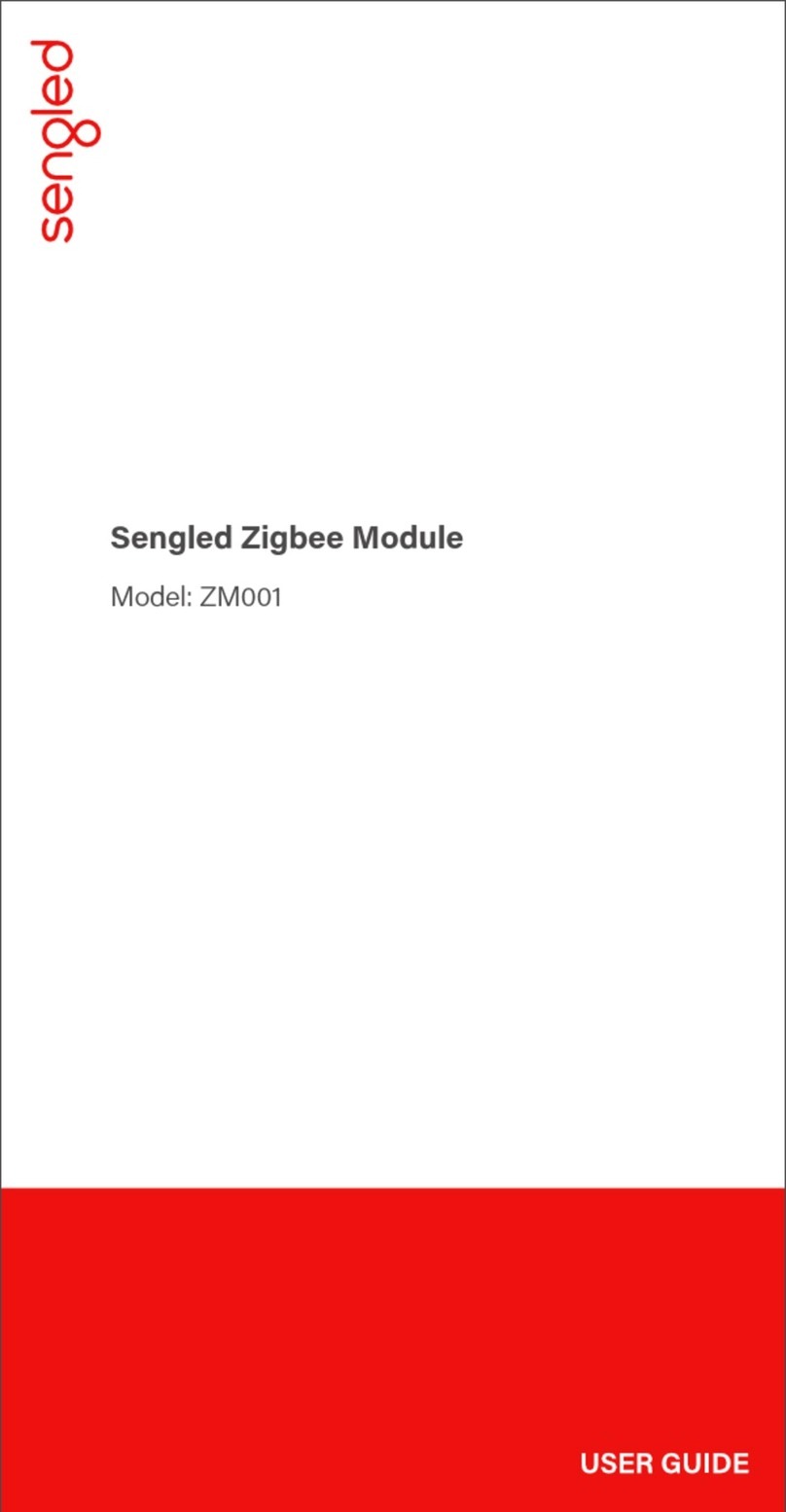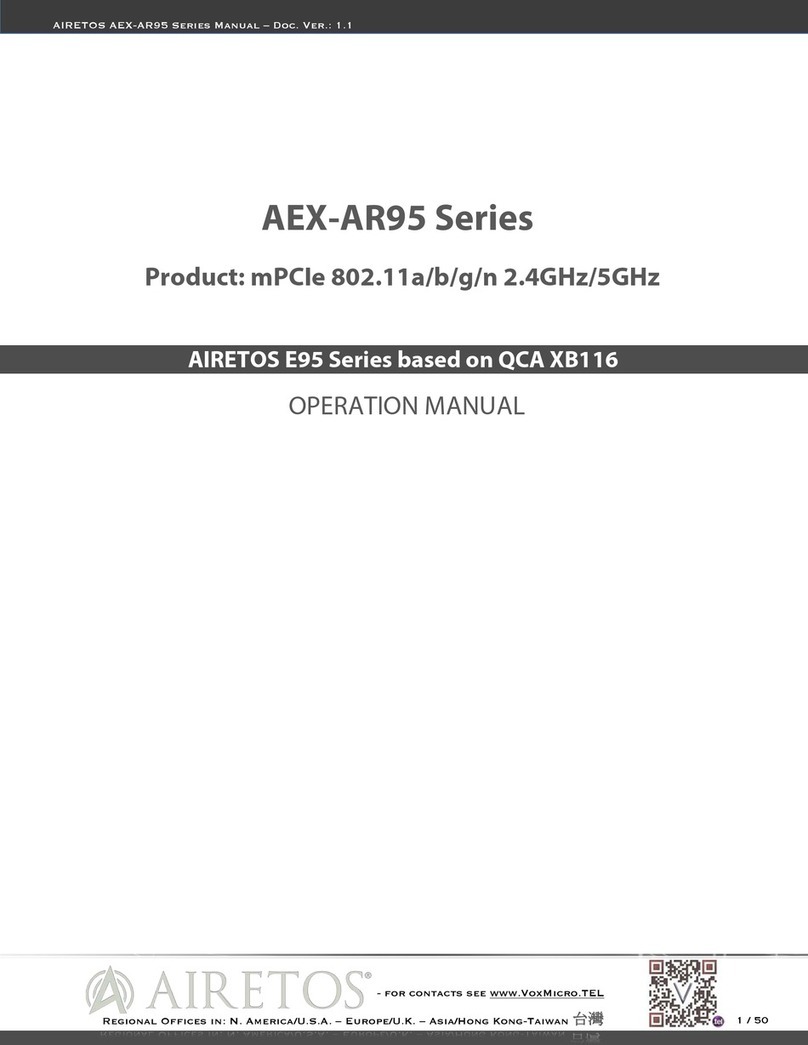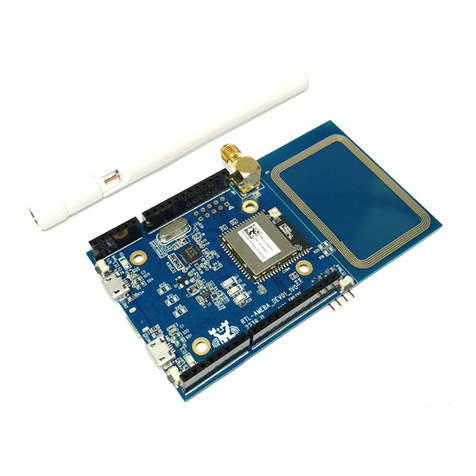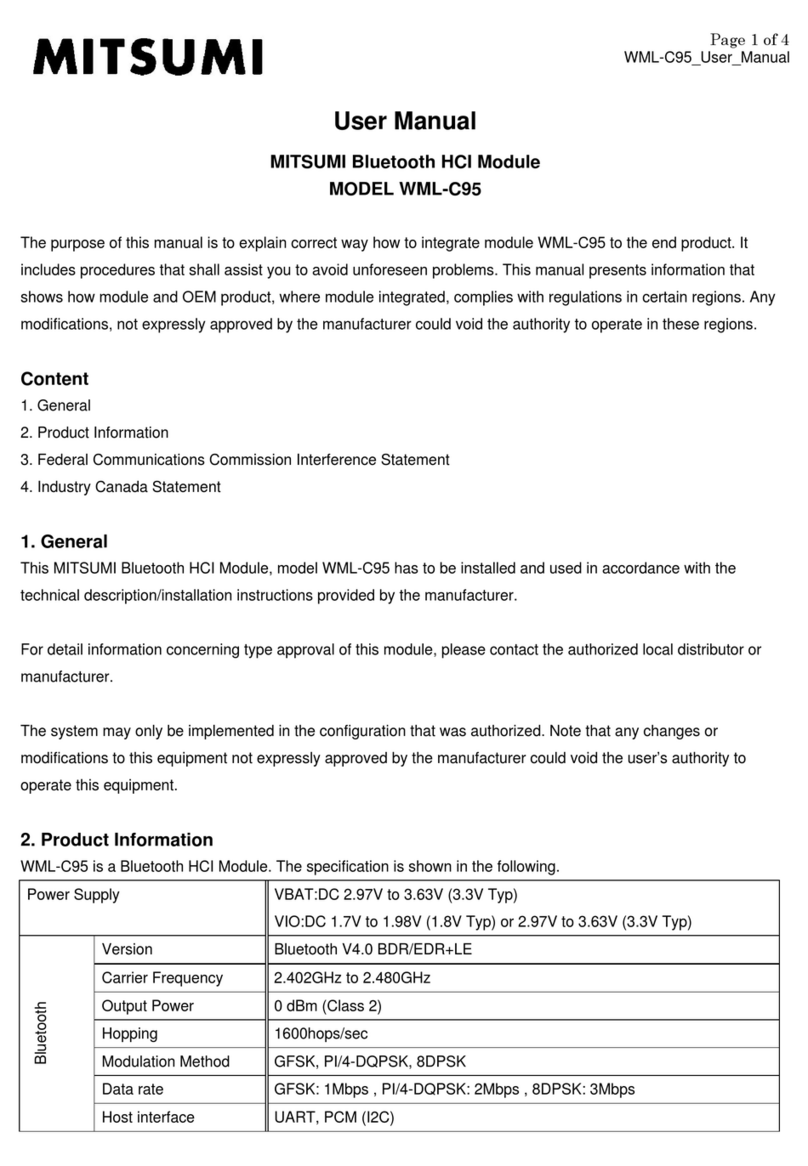
Chengdu Ebyte Electronic Technology Co., Ltd. E43-433T13S3 User manual
Copyright ©2012–2018, Chengdu Ebyte Electronic Technology Co.,Ltd. 1
Contents
1. Overview.............................................................................................................................................................................1
1.1 Introduction...............................................................................................................................................................1
1.2 Features.....................................................................................................................................................................1
1.3 Application................................................................................................................................................................2
2. Specification and parameter................................................................................................................................................2
2.1 Limit parameter.........................................................................................................................................................2
2.2 Operating parameter................................................................................................................................................. 2
3. Size and pin definition........................................................................................................................................................ 3
4. Recommended wiring diagram........................................................................................................................................... 4
5. Functional Details............................................................................................................................................................... 5
5.1 Module Reset............................................................................................................................................................ 5
5.2 AUX description....................................................................................................................................................... 5
5.2.1. Indication of wireless reception....................................................................................................................5
5.2.2. Indication of wireless transmitting............................................................................................................... 5
5.2.3.Configuration procedure of module...............................................................................................................6
5.2.4. Notes for AUX.............................................................................................................................................. 6
6. Operating mode...................................................................................................................................................................6
6.1 Mode switching.........................................................................................................................................................7
6.2 Transmission Mode (Mode 0)...................................................................................................................................7
6.3 RSSI Mode (Mode 1)................................................................................................................................................8
6.4 Configuration Mode (Mode 2)..................................................................................................................................8
6.5 Sleep mode (Mode 3)............................................................................................................................................. 8
6.6 Quick communication test........................................................................................................................................ 8
7. Instruction format............................................................................................................................................................... 9
7.1 Default parameter..................................................................................................................................................... 9
7.2 Reading operating parameters................................................................................................................................ 10
7.3 Reading version number......................................................................................................................................... 10
7.4 Parameter setting instruction .............................................................................................................................. 10
8. Hardware Design.............................................................................................................................................................. 11
9. FAQ...................................................................................................................................................................................12
9.1 Communication range is too short.......................................................................................................................... 12
9.2 Module is easy to damage.......................................................................................................................................12
9.3 High bit error rate................................................................................................................................................... 12
10. Welding operation guidance............................................................................................................................................13
10.1 Reflow temperature...............................................................................................................................................13
10.2 Reflow profile....................................................................................................................................................... 13
11. Related Model.................................................................................................................................................................14
12. Antenna Type.................................................................................................................................................................. 14
13. Batch packaging..............................................................................................................................................................15
Revision history.................................................................................................................................................................... 15
About us................................................................................................................................................................................15
